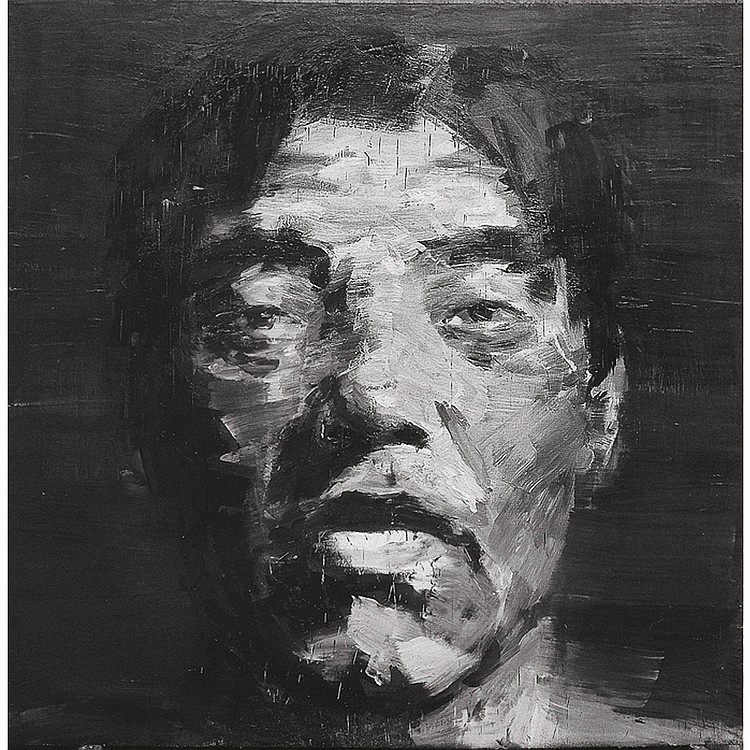Chuck Close is an American portrait
artist who was born in Monroe, Washington in 1940. By the age of
four, Close knew he wanted to be an artist. At age eleven, Close's
father died and his family lost their home. Art was Close's defense
against manic depression. Close attended the University of
Washington, Seattle and graduated in 1962 with his Bachelor of Fine
Arts degree. In 1964, Close moved to the East coast and enrolled in
Yale University's masters program for figurative art. After
graduating, Close achieved fame for his larger than life Hyperrealist
portraits. In 1988, Close was rendered quadriplegic because of a
spinal artery collapse, but this did not end his career. Close
changed his process to accommodate his handicap and has continued to
produce portraits that are impressively realistic. Close continues to
live and work in New York.
Bob,
Chuck Close, Synthetic polymer paint on canvas, 108 x 84 ”,
1969-70.
Close's pieces have been portraits
since his college years in the 1960's because they are what interest
him. Close takes photographs of himself and people in his life and
works from the photo to generate a larger than life depiction of
them. Close then lays out the composition as a grid on a canvas. I
have always been against using a grid because it allows for less
chance of an awesome error, but I have never considered myself to be
a strict realist and I have never worked in a very large format.
Close says, “ My work has always been driven by self-imposed
limitations.” I need to severely limit myself in order to achieve
successful works.
Mark, Chuck Close, Acrylic on Canvas, 108 x 84 ”, 1978-79.
Close is the most prominent portrait
painter of the second half of the twentieth century. I eventually
want to work large scale the way that close does but not in
Hyperrealism. After looking at Close's works, I know how I want to
produce my series of paintings for my Honor's Research Grant. Whether
or not this will carry over into my series for Senior Seminar, I am
unsure. I have never had a concrete painting process because I have
only painted for a year now. However, I am currently devising a set
of rules I will follow to complete a series of six self-portraits. I
will stay in a bare white walled room without sleeping until the
series of six paintings are done. I will not begin a new painting
until I feel comfortable with the first one being complete. I will
clean and restart my palette between each painting. I need strict
discipline to shape a dedication to painting and process that I have
yet to contrive.
Self-Portrait, Chuck Close, Acrylic on Canvas, 108 x 84 ”, 2002-03.






































